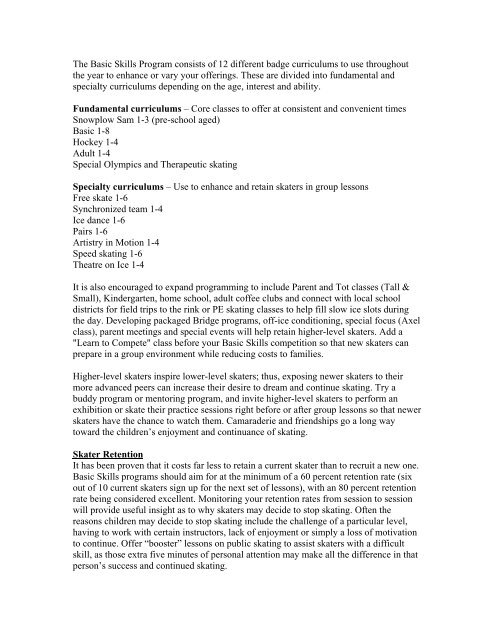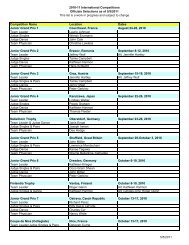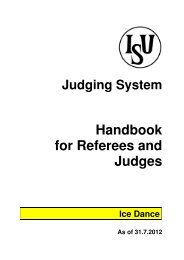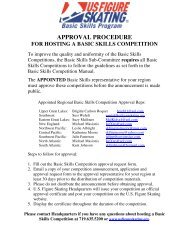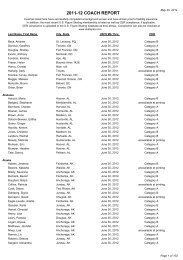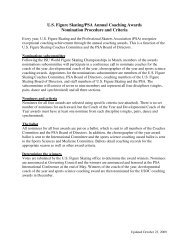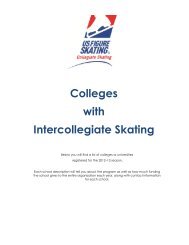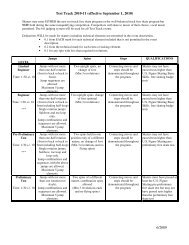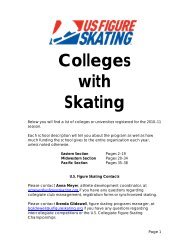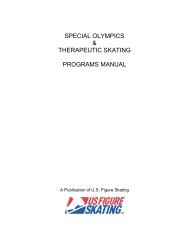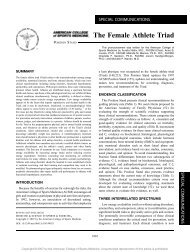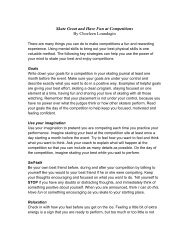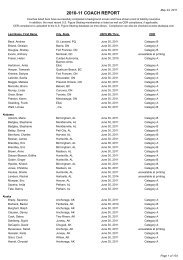Best Practices of Basic Skills The Basic Skills ... - US Figure Skating
Best Practices of Basic Skills The Basic Skills ... - US Figure Skating
Best Practices of Basic Skills The Basic Skills ... - US Figure Skating
You also want an ePaper? Increase the reach of your titles
YUMPU automatically turns print PDFs into web optimized ePapers that Google loves.
<strong>The</strong> <strong>Basic</strong> <strong>Skills</strong> Program consists <strong>of</strong> 12 different badge curriculums to use throughout<br />
the year to enhance or vary your <strong>of</strong>ferings. <strong>The</strong>se are divided into fundamental and<br />
specialty curriculums depending on the age, interest and ability.<br />
Fundamental curriculums – Core classes to <strong>of</strong>fer at consistent and convenient times<br />
Snowplow Sam 1-3 (pre-school aged)<br />
<strong>Basic</strong> 1-8<br />
Hockey 1-4<br />
Adult 1-4<br />
Special Olympics and <strong>The</strong>rapeutic skating<br />
Specialty curriculums – Use to enhance and retain skaters in group lessons<br />
Free skate 1-6<br />
Synchronized team 1-4<br />
Ice dance 1-6<br />
Pairs 1-6<br />
Artistry in Motion 1-4<br />
Speed skating 1-6<br />
<strong>The</strong>atre on Ice 1-4<br />
It is also encouraged to expand programming to include Parent and Tot classes (Tall &<br />
Small), Kindergarten, home school, adult c<strong>of</strong>fee clubs and connect with local school<br />
districts for field trips to the rink or PE skating classes to help fill slow ice slots during<br />
the day. Developing packaged Bridge programs, <strong>of</strong>f-ice conditioning, special focus (Axel<br />
class), parent meetings and special events will help retain higher-level skaters. Add a<br />
"Learn to Compete" class before your <strong>Basic</strong> <strong>Skills</strong> competition so that new skaters can<br />
prepare in a group environment while reducing costs to families.<br />
Higher-level skaters inspire lower-level skaters; thus, exposing newer skaters to their<br />
more advanced peers can increase their desire to dream and continue skating. Try a<br />
buddy program or mentoring program, and invite higher-level skaters to perform an<br />
exhibition or skate their practice sessions right before or after group lessons so that newer<br />
skaters have the chance to watch them. Camaraderie and friendships go a long way<br />
toward the children’s enjoyment and continuance <strong>of</strong> skating.<br />
Skater Retention<br />
It has been proven that it costs far less to retain a current skater than to recruit a new one.<br />
<strong>Basic</strong> <strong>Skills</strong> programs should aim for at the minimum <strong>of</strong> a 60 percent retention rate (six<br />
out <strong>of</strong> 10 current skaters sign up for the next set <strong>of</strong> lessons), with an 80 percent retention<br />
rate being considered excellent. Monitoring your retention rates from session to session<br />
will provide useful insight as to why skaters may decide to stop skating. Often the<br />
reasons children may decide to stop skating include the challenge <strong>of</strong> a particular level,<br />
having to work with certain instructors, lack <strong>of</strong> enjoyment or simply a loss <strong>of</strong> motivation<br />
to continue. Offer “booster” lessons on public skating to assist skaters with a difficult<br />
skill, as those extra five minutes <strong>of</strong> personal attention may make all the difference in that<br />
person’s success and continued skating.


